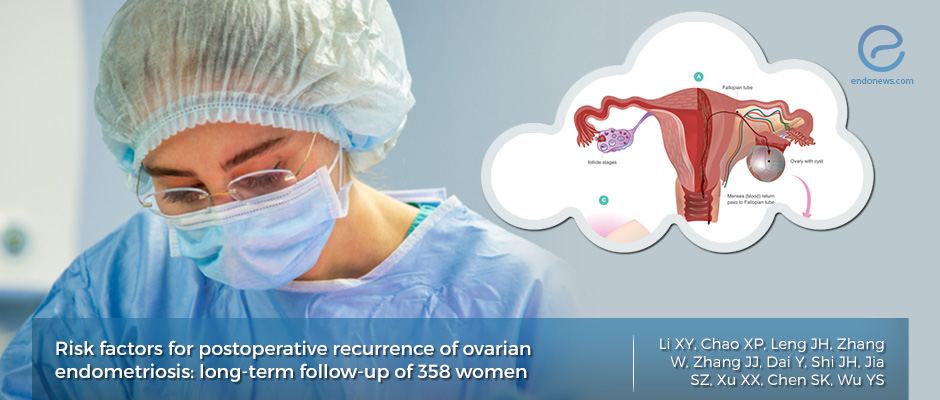Severity of dysmenorrhea is among the risk factors in recurring ovarian endometriosis
Oct 23, 2019
Could the post-operative recurrence of ovarian endometriosis be eliminated?
Key Points
Importance:
- Endometriosis is a debilitating chronic estrogen-dependent disease mainly seen in women of reproductive age with a prevalence of 5–10%.
- Ovarian endometriosis is the most common type in which laparoscopic conservative surgery has been considered as the main treatment.
- Recurrence rates following surgery remain high, even for those receiving postoperative medical therapy.
- Unraveling the causative factors in recurrent endometriosis and related pain following surgery is a highly important topic for patient care.
Background:
- There are clues suggesting immune cells, adhesion molecules, extracellular matrix metalloproteinase and pro-inflammatory cytokines affect peritoneal microenvironment, favoring differentiation, adhesion, proliferation, and survival of ectopic endometrial tissue components.
- However, there are few studies analyzing the determinants of the long-term recurrence rate for ovarian endometriosis beyond 5 years after surgery.
- It is highly important to clarify the risk factors for ovarian endometriosis and endometriosis-related pain recurrence in long-term follow up following surgical treatment.
What's Done Here?
- A series of 358 women with ovarian endometriosis who had a minimum follow-up of five years after laparoscopic excision was analyzed for possible factors causing recurrence of the disease.
Highlights:
- According to the results of this series, the rate of endometriosis and/or endometriosis-related pain recurrence increased yearly in the first 8 years.
- The extent of dysmenorrhea and postoperative pregnancy seem to be independent risk factors for prediction of the recurrence.
Lay Summary
Dr. Yan Li and associates from Beijing, China have recently published their results on the retrospective analysis of a large group of ovarian endometriosis patients who had laparoscopic surgical treatment in the "Journal of Ovarian Research".
Endometriosis is a chronic estrogen-dependent disease mainly seen in women of reproductive age where ovarian endometriosis or endometrioma is the most common type. Immune cells, adhesion molecules, extracellular matrix metalloproteinase and pro-inflammatory cytokines affecting peritoneal microenvironment, all seem to favor differentiation, adhesion, proliferation, and survival of ectopic endometrial tissue components.
Laparoscopic conservative surgery is the main treatment but recurrence rates following surgery remain high, even with postoperative medical therapy. Related factors in recurrent endometriosis and related pain following surgery are highly important for patient care.
There are few studies analyzing the factors in the long-term recurrence rate for ovarian endometriosis beyond 5 years after surgery. A series of retrospectively analyzed 358 women with ovarian endometriosis who had a minimum follow-up of five years after laparoscopic excision was analyzed for possible factors causing recurrence of the disease.
In this long-term follow-up study for more than 5 years, the rate of ovarian endometriosis and/or endometriosis-related pain recurrence increased yearly in the first 8 years.
Most importantly, the extent of dysmenorrhea and postoperative pregnancy are independent risk factors for this complication.
The authors suggest that in patients having serious dysmenorrhea, more attention to this complication should be given along with individual management.

